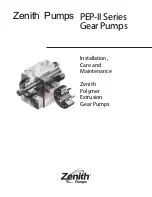
8
3.6 UNIT MOUNTING
2 . If elevating a unit on a flat roof , use 4”× 4”(or equivalent) stringers
positioned to distribute unit weight evenly and prevent noise and vibration (See Fig.3).
NOTE:Do not block drain openings shown in Fig.5.
3. If unit must be elevated because of anticipated snow fall, secure unit and
elevating stand such that unit and/or stand will not tip over or fall off.
If elevating the heat pump, either on a flat roof or on a slab, observe the following guidelines.
1. The base pan provided elevates the heat pump 2” above the base pad.
NOTE: To tie down unit, see 3.6.
BASE PAD
(CONCRETE OR
OTHER SUITABLE
MATERIAL)
Note: It is recommended that these precautions be taken for units being installed in areas
where snow accumulation and prolonged below-freezing temperatures occur.
• Units should be elevated 3-12 inches above the pad or rooftop, depending on local
weather. This additional height will allow drainage of snow and ice melted durIng defrost
cycle prior to its refreezlng. Ensure that drain holes in unit base pan are not obstructed,
preventing drainage of defrost water.
• If possible, avoid locations that are likely to accumulate snow drifts. if not possible, a snow
drift barrier should be installed around the unit to prevent a build-up of snow on the sides of
the unit.
Min 12"
Snow
barrier
3- 12" Elevation
Snow legs
pad
2. Cold Climate Considerations (Heat Pump Only)
Fig.4 Cold Climate Considerations (Heat Pump Only)
BASE PAN (BOTTOM
VIEW) DO NOT OBSTRUCT
DRAIN HOLES
(SHADED)
ELEVATION ABOVE
ANTICIPATED
SNOW IS NECESSARY
Fig.5 RECOMMENDED ELEVATED INSTALLATION









































